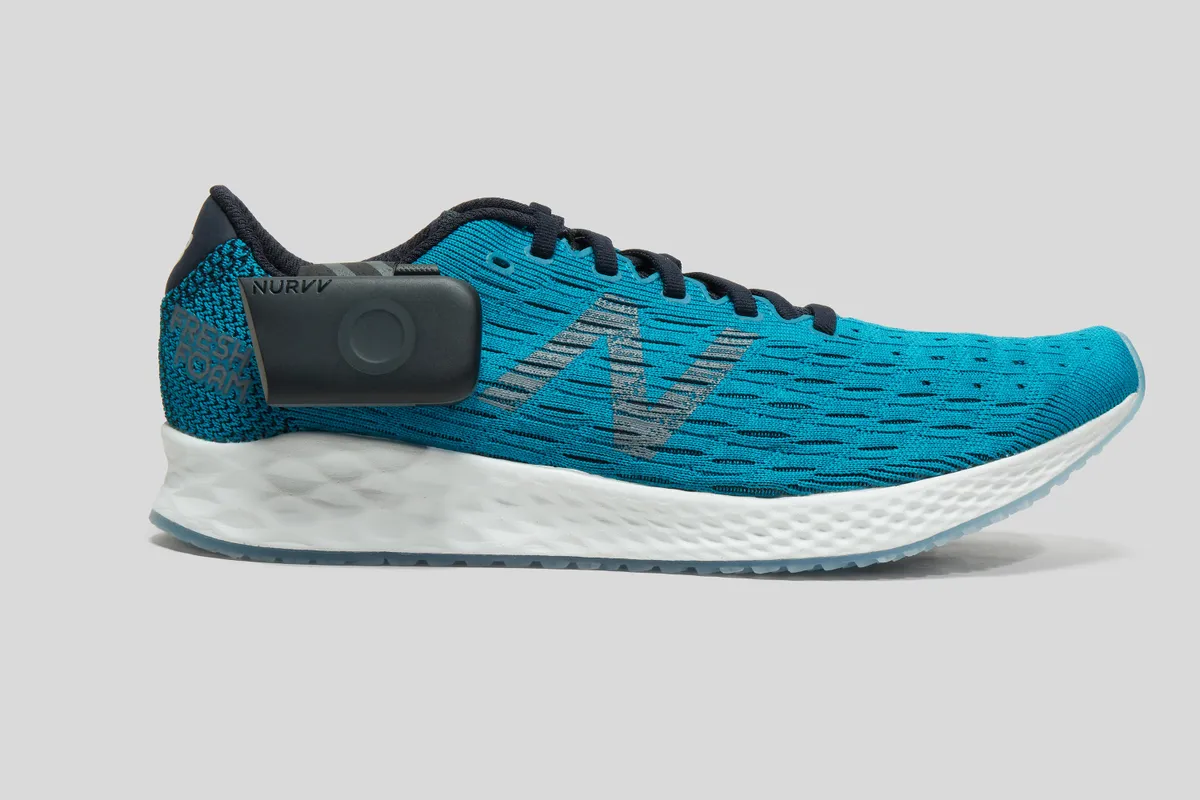Just when you thought every metric-measuring tri tool had been invented, along strides this cutting-edge insole from Nurvv, designed to give you next level of insight into your run technique. And, despite initial scepticism, we were impressed. This might be one wearable that stands the test of time.
- Winter run training shoes: 7 of the best reviewed
- 11 of the best trail and off-road running shoes for men and women
- Triathlon race-day run shoes: 10 of the best for racing the final leg
- Carbon-fibre plates in run shoes: what they are, how they work and whether they’re worth the hype
- Can run shoes make you faster?
Nurvv’s USP is two smart insoles loaded with 16 sensors apiece. They fit between your current insole and the sole of the shoe. Each features a housing that clips onto your foot entry where a further removable sensor sits, which sends all the data to your phone. We’re not huge fans of clipping sensors to your shoe – in fact, aside from triathlon laces, we generally avoid it – but predictions of discomfort and bulk were misguided.
The insoles are slimline and don’t affect run tactility at all, and while the entry attachment’s relatively bulky, in use you don’t feel them. The only caveat is that it fitted plusher to our lightweight off-road Inov-8s compared to more cushioned Brooks’ road runners.

As for how it works, you press a button on each sensor that taps into GPS that taps further into the Nurvv app on your phone. That’s pretty standard stuff. It’s the array of technique data that stands out, with each of those sole sensors measuring cadence, step length, elevation, foot strike, degree of pronation and training load. This is where it really performs. While the likes of Garmin and their HRM Pro tap into run metrics like cadence, arguably it can’t match the accuracy of the Nurvv, which is collecting data at source – in other words, your feet.
As a snapshot over the testing period, it seems that my technique changes between lightweights and high mileage. The former, I’m seemingly more a midfoot lander; the latter, a rear foot. Maybe that’s why I much prefer running off-road, albeit Nurvv’s more accurate on firmer ground.
Reassuringly, I no longer over-pronate as much as years gone by, which my less-troublesome right knee can vouch for, while the less said about my inefficient stride length the better. Wisely, each metric includes advice on how to improve that facet of technique, which you can work on and reassess down the line.
Unless you have certain Garmins or an Apple watch, you’ll have to take your phone to enjoy on-the-fly feedback, which isn’t ideal for some. That said, you can leave your phone at home and press the big button on the heel sensor to record your run before downloading and assessing later on. Finally, while it’s mooted as rainproof, we’d avoid big puddles. Overall, it’s a credible addition to your tri tool line-up. Whether you have room for more metrics remains to be seen.
New updates to the Nurvv in September 2021 see a run power sensor added to its list of metrics, which is said to provide a direct measure of the work being done by the runner. The Nurvv team tout running power as the next big thing in run performance tracking, claiming it to be the most reliable tracking metric as it accounts for external factors like gradient and wind, which would otherwise affect metrics like heart rate and pace.
Unlike heart rate, Nurvv says that running power shouldn't 'lag' and is only affected by terrain, so 'provides the most consistent metric to train and race to'. The new update provides the option to perform a 10-minute 'power test' which will determine the user's threshold power to create power training zones. It will then provide power workout suggestions for how to incorporate power goals and zones within your training.